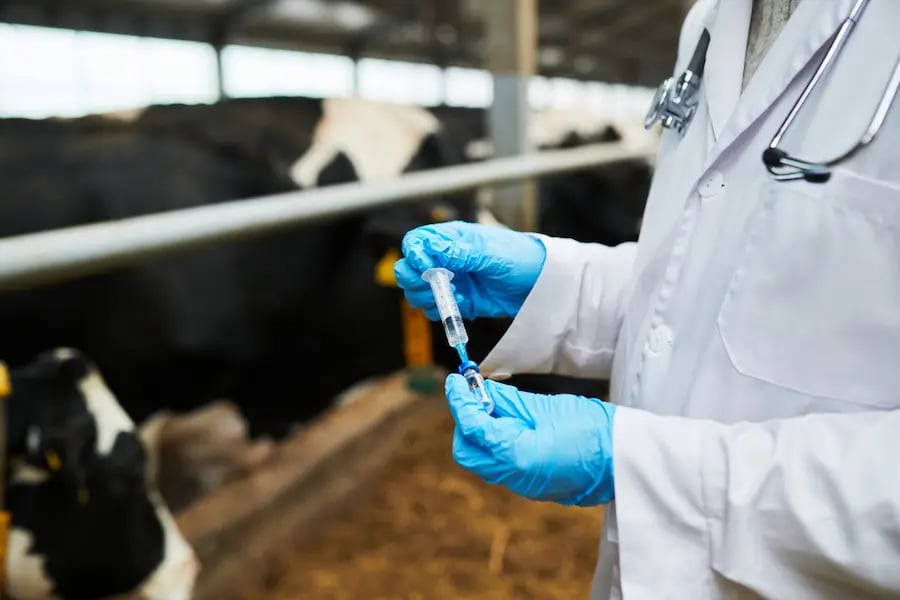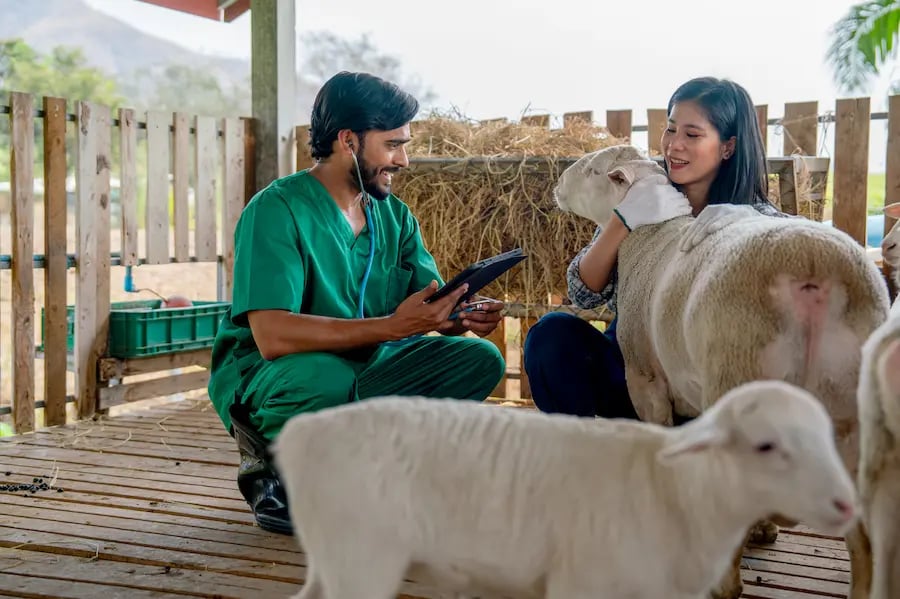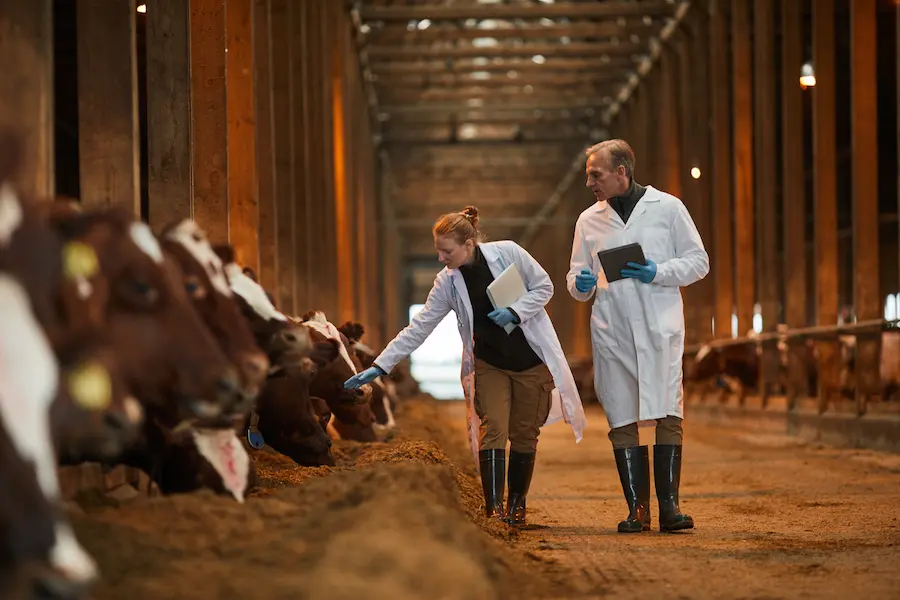The body defends itself from pathogens through physical barriers, nonspecific innate immunity (e.g., inflammation, fever), and acquired or adaptive immunity.
Prefer to listen to this article? Click the play button below and enjoy our podcast!
Acquired immunity is specific for each type of pathogen and has two essential components: humoral and cellular.
- The humoral response, involving antibodies produced by B lymphocytes, neutralizes extracellular pathogens (bacteria, parasites, and viruses). B lymphocytes give rise to plasma cells producing antibodies and memory B cells for long-term response. These memory B cells can persist for months to years in the body and respond immediately when the pathogen is found again in the body.
- On the other hand, the cellular response involves T lymphocytes, specifically effector T cells, responsible for destroying infected cells.
Regulatory T cells govern both responses, leading to Th1 promoting cellular immunity and Th2 promoting humoral immunity.
Types of vaccines
Vaccination stimulates the development of specific adaptive immunity that will increase the patient's resistance to natural infection. Currently, there are various types of vaccines:
- Attenuated. The pathogen is grown in conditions in which its virulence is attenuated, but without losing its replication capacity when inoculated.
- Inactivated. The pathogen is inactivated by the effect of heat or chemical compounds. Being dead, it does not replicate in the body when inoculated with the vaccine.
- Toxoid. Diseases in which the toxin produces the pathogenic effect, what is inoculated is not the bacteria, but the toxin (for example, the vaccines against various Clostridium perfringens toxins).
- Anaculture (or bacterin-toxoids). The bacterial culture (bacterin) and the toxins (toxoid) are inoculated together (for example Clostridium chauvoei vaccines).
- Subunit vaccines, polysaccharides, etc. The vaccine consists of injecting the most antigenic external parts of the pathogen. Therefore, it cannot be replicated.
- Modern genetic vaccines as DNA, RNA, and viral vector vaccines. They consist of the insertion of DNA or RNA of the pathogen against which you want to be immunized in vectors such as plasmids, lipid nanoparticles, or non-pathogenic viruses so that once injected they produce the molecules against which you want to produce immunity. For now, these are not available for use in cattle.

Immune response to vaccination
Not all vaccines produce the same immune response; fundamentally, it depends on the type of vaccine.
With inactivated vaccines, the pathogens do not distribute or replicate in the body after being inoculated. Therefore, they generate a response of lower intensity, shorter duration, and only of the Th2 type based on antibodies effective against pathogens found in the extracellular medium.
To improve these deficiencies in primary vaccination, inactivated vaccines require two separate doses with a time interval that varies according to the vaccine. This implies that the acquisition of immunity will be delayed. Likewise, for the development of memory cells, booster vaccinations are required. Depending on the vaccine, these booster vaccinations may be applied at 6 months, 1 year or more time later. All the above is improved with the use of adjuvants1.
Live attenuated vaccines develop humoral and cellular immunity because they simulate the natural infection when pathogens replicate within the patient's cells. This results in a better immune response since it includes the Th1 type, which is faster and longer lasting. Cell immunity is essential to fight against infections from pathogens found inside the host's cells. Normally only one injection is needed, so protection is faster, and the immunity is more powerful and long-lasting2,3.
Vaccine safety
In the past, some live vaccines have been the cause of serious side effects, linked either to a return of the vaccine strain to virulence or, more likely, to contamination by another viral strain of the cell cultures used to produce the vaccine. At present, production and control methods have improved considerably, and such a risk can be considered negligible. It can therefore be said that all vaccines authorised on the market are safe, whether inactivated or live.
As a result of viral replication linked to the mode of action of live vaccines, very young and/or immunosuppressed animals can suffer from infections that, although benign, undermine their already weakened immune system5. In contrast, inactivated vaccines stimulate the immune system to a lesser extent which makes such an adverse event less likely to occur. But to compensate a lower immune response, inactivated vaccines often contain an adjuvant which is necessary to ensure a good immune response. These kind of components can cause local or general reactions such as inflammation of the injection site, fever or hypersensitivity reactions.
Range of protection
Another characteristic of cellular immunity generated by live attenuated vaccines is that the immune response is generated towards various epitopes of the pathogen, which confers broader protection against non-homologous strains. Inactivated vaccines are much more specific and therefore do not induce a good immune response against heterologous strains6.
This effect has been seen, for example, in the case of BVD vaccination. There are at least 24 Pestivirus A subgenotypes (BVDV 1a–1x) and 4 Pestivirus B subgenotypes (BVDV-2a–2d), with the greatest variability in Europe7,8. Achieving cross-immunity with a vaccine is of greatest interest, especially from the point of view of foetal protection to avoid the birth of persistently infected (PI) calves. These PI calves can occur when pregnant dams, previously vaccinated with inactivated vaccines, face an infection with a heterologous strain9.

Conclusion
Live attenuated vaccines induce both humoral and cellular immunity, offering a more comprehensive and robust defence against pathogens. They generally require fewer doses and provide quicker protection compared to inactivated vaccines. The immune response is faster, longer-lasting and provides cross-immunity against heterologous strains. For all these reasons, live attenuated vaccines seem to produce better protection than inactivated ones4.
Bibliography
1. Ridpath JF, Dominowski P, Mannan R, et al. Evaluation of three experimental bovine viral diarrhea virus killed vaccines adjuvanted with combinations of Quil A cholesterol and dimethyldioctadecylammonium (DDA) bromide. Vet Res Commun 2010;34(8):691–702.
2. TNewcomer BW, Walz PH, Givens MD, Wilson AE. Efficacy of bovine viral diarrhea virus vaccination to prevent reproductive disease: a meta-analysis. Theriogenology. 2015 Feb;83(3):360-365.e1. https://www.doi.org/10.1016/j.theriogenology.2014.09.028
3. Stevens ET, Michael BS, Burdett WW, et al. Efficacy of a non-adjuvanted, modified-live virus vaccine in calves with maternal antibodies against a virulent bovine viral diarrhea virus type 2a challenge seven months following vaccination. Bovine Pract 2011;45(1):23–31.
4. Chamorro MF, Palomares RA. Bovine Respiratory Disease Vaccination Against Viral Pathogens: Modified-Live Versus Inactivated Antigen Vaccines, Intranasal Versus Parenteral, What Is the Evidence? Vet Clin North Am Food Anim Pract. 2020 Jul;36(2):461-472. https://www.doi.org/10.1016/j.cvfa.2020.03.006
5. Fulton RW, Blood KS, Panciera RJ, Payton ME, Ridpath JF, Confer AW, Saliki JT, Burge LT, Welsh RD, Johnson BJ, Reck A. Lung pathology and infectious agents in fatal feedlot pneumonias and relationship with mortality, disease onset, and treatments. J Vet Diagn Invest. 2009 Jul;21(4):464-77. https://www.doi.org/10.1177/104063870902100407
6. Klimowicz-Bodys MD, Polak MP, Płoneczka-Janeczko K, Bagnicka E, Zbroja D, Rypuła K. Lack of Fetal Protection against Bovine Viral Diarrhea Virus in a Vaccinated Heifer. Viruses. 2022 Feb 2;14(2):311. https://www.doi.org/10.3390/v14020311
7. Deng M, Chen N, Guidarini C, Xu Z, Zhang J, Cai L, Yuan S, Sun Y, Metcalfe L. Prevalence and genetic diversity of bovine viral diarrhea virus in dairy herds of China. Vet Microbiol. 2020 Mar;242:108565. https://www.doi.org/10.1016/j.vetmic.2019.108565
8. Yeşilbağ K, Alpay G, Becher P. Variability and Global Distribution of Subgenotypes of Bovine Viral Diarrhea Virus. Viruses. 2017 May 26;9(6):128. https://www.doi.org/10.3390/v9060128
9. Antos A, Miroslaw P, Rola J, Polak MP. Vaccination Failure in Eradication and Control Programs for Bovine Viral Diarrhea Infection. Front Vet Sci. 2021 Jun 29;8:688911. https://www.doi.org/ 10.3389/fvets.2021.688911
About the author
Philippe Gisbert (Ruminants Global Technical Manager)
Philippe Gisbert started his career in 1994 as a Vet practitioner working with companion and farm animals for over 9 years. He then became Health Affairs Manager for Group Agena (artificial insemination company). In 2008 he joined Eurofins – Laboratoire Coeur de France as Animal Health Unit Manager where he worked for 7 years until he joined Ceva France as Technical Manager Ruminants (Infectiology, Vaccines and Diagnostic). Since 2020 he is Global Technical Manager for Biologicals, Udder Health and Antiinflammatories. He is a member of SIMV diagnostic and anti-infective technical groups and has integrated different working groups of ANSES and UNCEIA related to epidemiology, antibiotic resistance and reproduction in livestock.
Explore author’s articles



Leave your comments here